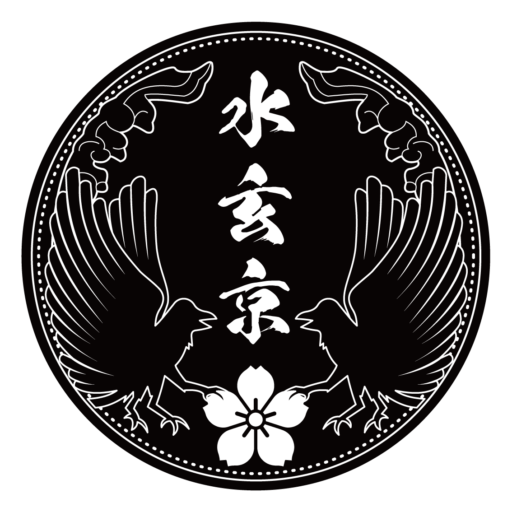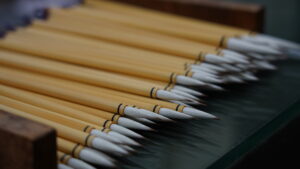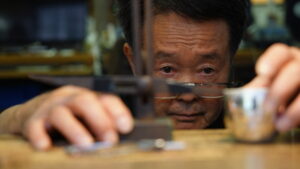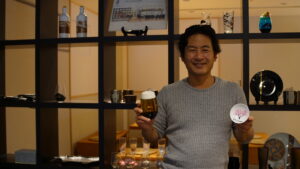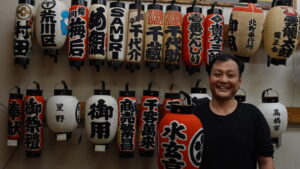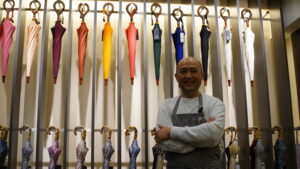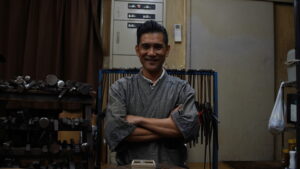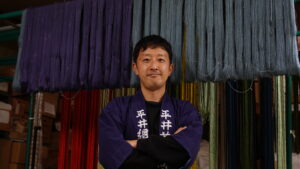Ebitani Kohgei has a workshop in Konan City, Shiga Prefecture. Omi Ikkan-bari (Japanese paper box) is made of paper strings, developed by Kinsuke Ebitani. The man we interviewed this time is Ryota Ebitani, the third generation, grandson of the first generation. Ryota Ebitani has an unusual background for a craftsman, having worked as a pastry chef and a motorcycle racer. We interviewed Mr. Ryota Ebitani, who overcame a serious accident during a motorcycle race to become an Omi Ikkan-bari craftsman.
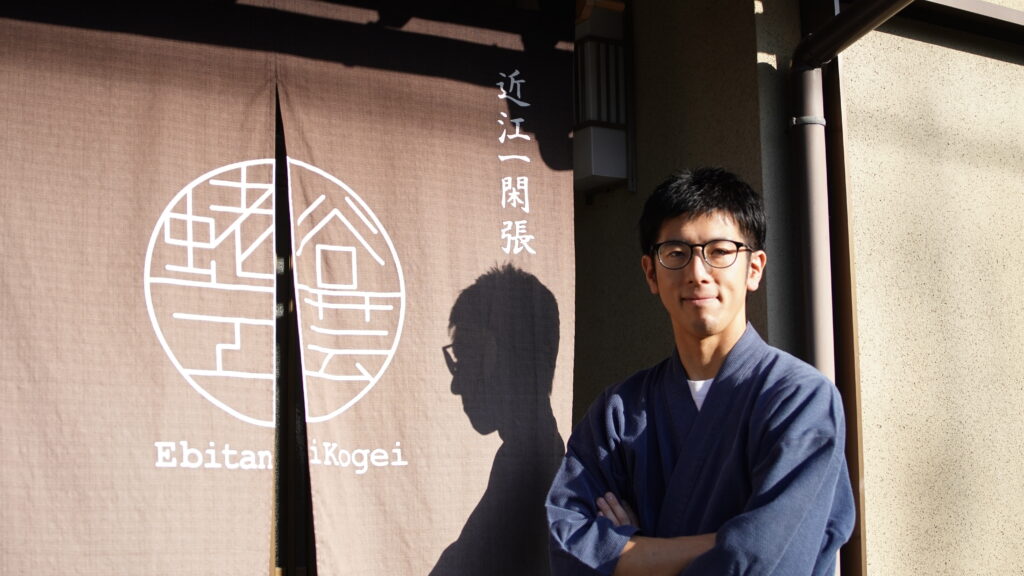
- —Please tell us about your background.
-
I was born in Shiga Prefecture, and before becoming a craftsman of Omi Ikan-bari, I became a pastry chef because I loved making sweets under the influence of my mother. After I stopped being a pâtissier, I worked as a motorcycle racer while working as a mechanic at a motorcycle shop.
- —Did you always have an interest in motorcycles?
-
I saw my father riding a motorcycle when I was little, but I wasn’t that interested at the time. Before I started working as a pastry chef, I started riding a motorcycle as a means of transportation, and gradually became interested in that.
I still ride on the circuit once in a while (laughs).

- —What made you become a craftsman at Omi Ikkan-bari from a motorcycle racer?
-
I had a big crash during a motorcycle race and was injured quite badly, making it impossible for me to continue riding on it. Just at that time, my father was about to close down his Omi Ikkan-bari business because he had no heir, and I thought it would be a shame to lose this work that I had seen since I was a child, so I decided to take over the business.
- —Did you originally plan to take over this job?
-
I didn’t at all (laughs). I had been looking at this job since I was a child and thought it was old-fashioned to say the least, so I wanted to do what I loved.
My parents also said I didn’t have to take over, so I worked as a pastry chef and as a racer while trying to become a motorcycle mechanic.
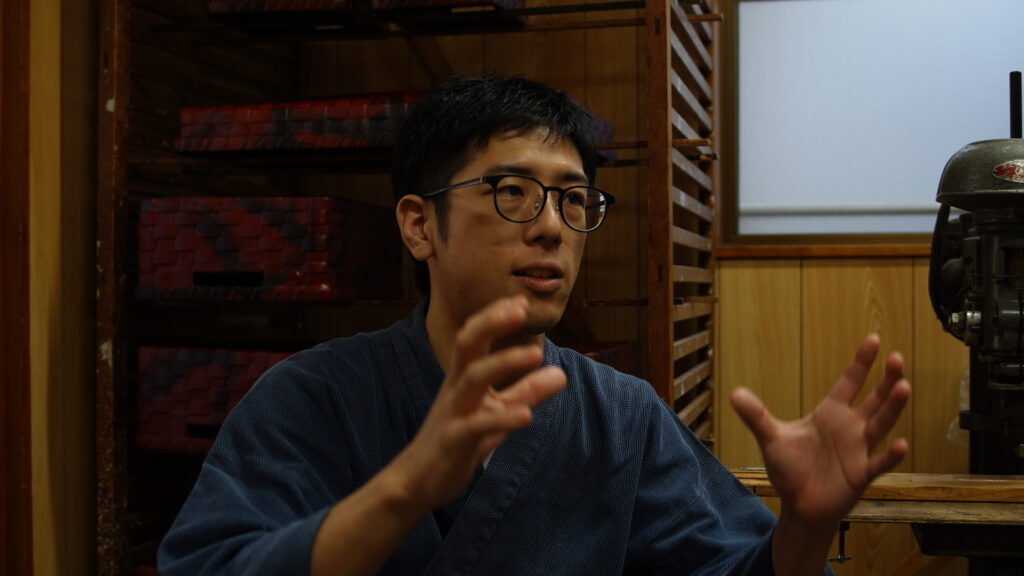
- —How did your parents react when you decided to take over the family business?
-
I don’t remember much, but later on, when I was doing this job, I could feel how happy my parents were (laughs).
- —Did you start out the job as an apprentice?
-
It was a family business, so I didn’t feel like an “apprentice”. I was able to do it after about three years of being taught until I was able to make something completely on my own.
I could make things by myself rather quickly because I had always seen the work since I was a child, such as cutting paper strings as a junior high school student to help their work. - —How was Omi Ikkan-bari born?
-
Originally, my grandfather was working in Kyoto, and before he created Omi Ikkan-bari, he was a craftsman who made doll stands by applying washi paper on wooden boards and painting them. Those wooden boards were only flat, so my grandfather wanted to make something three-dimensional, and he came across paper strings, applied the technique of stretching washi. This is how Omi Ikkan-bari was born. Around 1989, Omi Ikkan-bari began to sell better than doll stands, and that was the beginning of Omi Ikkan-bari.
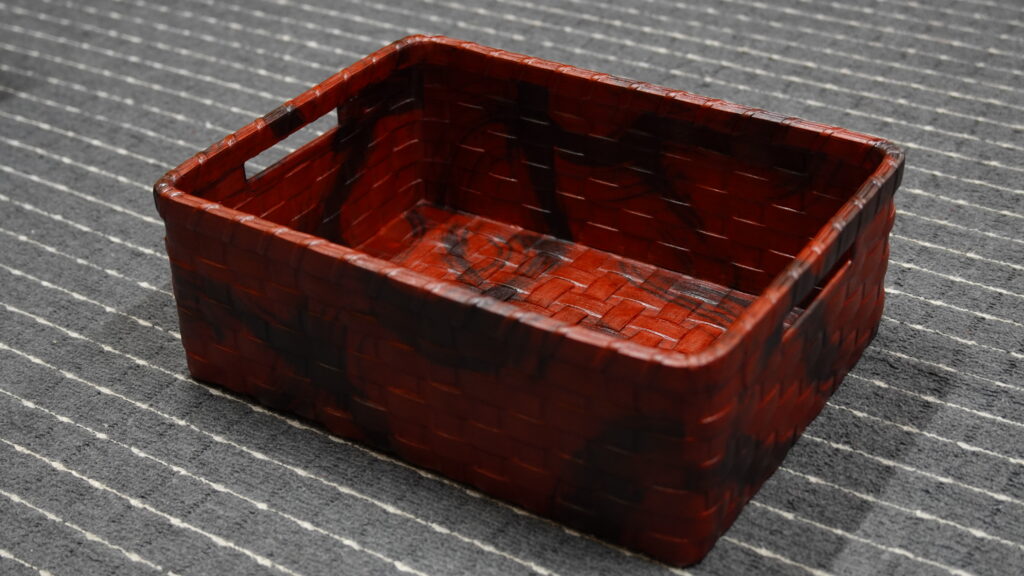
- —What is the most rewarding moment of this job?
-
It is when our customer got the craft that is completely original.
When a customer buys a product that I have created through trial and error, saying, “I like this,” I feel like my efforts have been rewarded, and I am extremely happy. - —What are your specialties when you craft Omi Ikkan-bari?
-
Omi Ikkan-bari has a very special process of applying washi paper. This is our identity as a craftsman, and we focus on applying washi clean.
- —How do you want people to use Omi Ikan-bari?
-
I would like people to use it for everyday use, of course, but I would also like it to be used as interior decoration.
I think it would be interesting to have people use it in that way, as it looks good when it is placed or displayed. Wooden and bamboo products are sometimes cracked overseas due to the different climate from Japan. However, since Omi Ikkan-bari is made of paper strings, it is unaffected by climate change, and this enables everyone to use it.
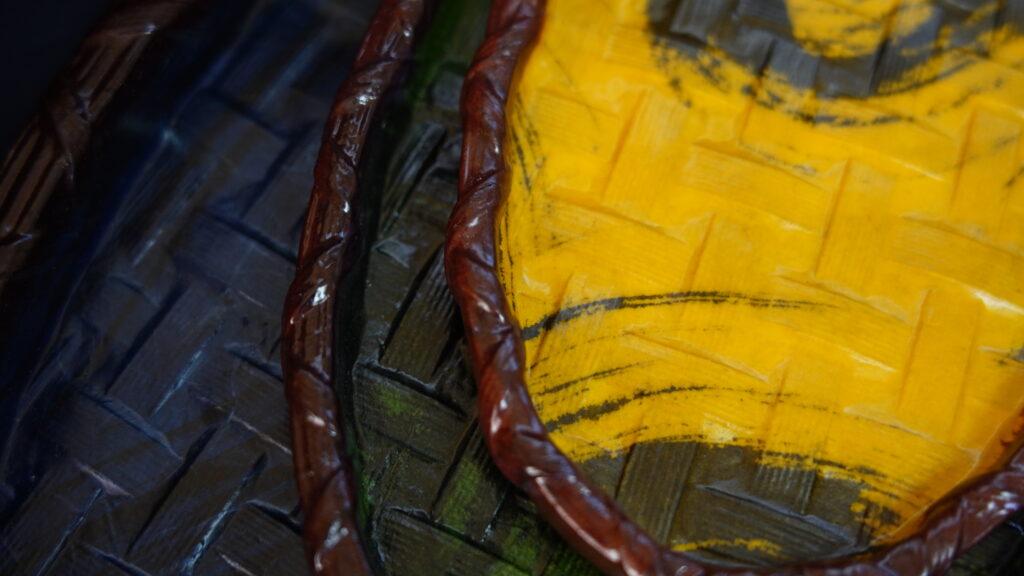
- —Are there any people you admire?
-
The owner of the motorcycle when I was the racer. I was competing in a world where motorcycle racing put me in constant danger, and I had lost several people I knew. At that time, the owner told me, “Live your life so that you can die smiling at the moment of death, leave no regrets, and live life to the fullest,” and those words have stayed with me.
That became my goal in life, and before the race started, I would organize my surroundings and go to the race.
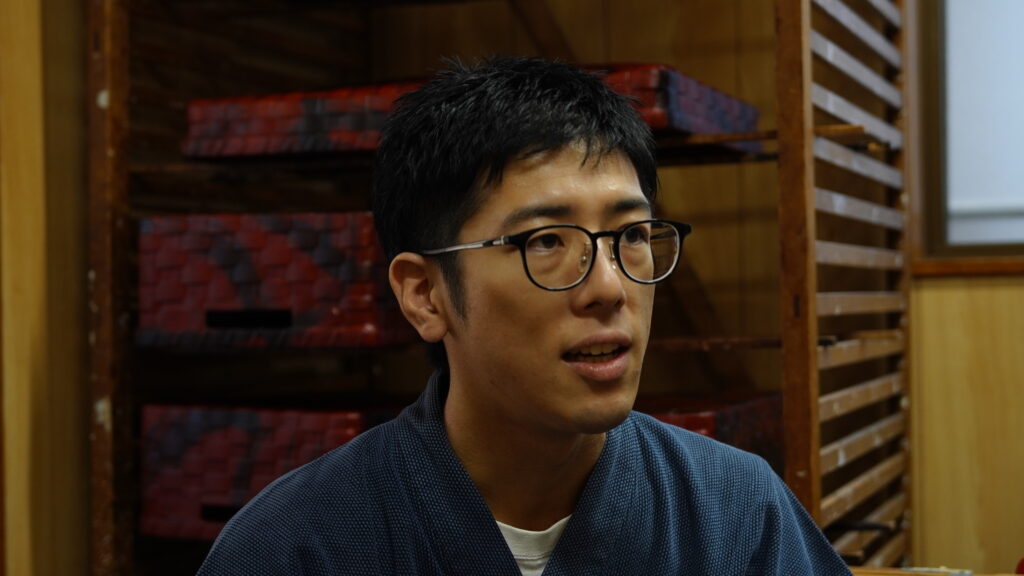
- —Please tell us about your vision for the future.
-
I would like many people to know about and use IKKAN-BARI. Omi Ikkan-bari is lightweight, durable, and very long-lasting craft. Just by having a good one in your room, your life will be enriched so that I would like everyone to experience this feeling.
I am now starting to make Japanese paper cups coated with lacquer using the ikkan-bari technique. In terms of the design, I would like to make something that matches the modern trend and that can be used by the younger generation.
After the interview
Talking with Mr. Ebitani, I felt that he really enjoys his work. He is not satisfied with his work and still continues to create new craft for his customers. I felt that his attitude for his craft is something I have to learn. You can see how Mr. Ebitani makes Omi Ikkan-bari from the following website. This product is also available at Suigenkyo online store.
We hope you will take this beautiful craft and enjoy the quality of Omi Ikkan-bari.
You can watch the making process on YouTube!
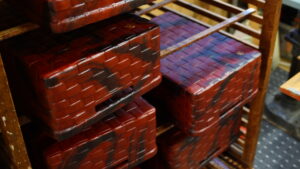
Suigenkyo Online Store
We offer a wide range of products including tableware, accessories, and interior design.
Suigenkyo YouTube
You can see the making process of the products listed on Suigenkyo Online Store.
